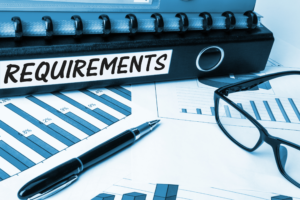Businesses gather information from diverse sources, creating a need to transform this data into meaningful insights. Business Intelligence (BI) tools enable organizations to analyze and visualize data, supporting informed strategic decision-making.
This article compares three widely used BI tools—Tableau, Power BI, and Looker—to help determine which is best suited for different use cases. By examining their features, integrations, and applications, we aim to provide a clear guide for selecting the right tool for your organization’s needs.
Overview of the BI Tools
Tableau
Tableau is a leading BI tool recognized for its advanced data visualization capabilities, making it a go-to solution for creating compelling and interactive dashboards. Its strengths lie in a user-friendly interface that supports drag-and-drop functionality, enabling users to build visualizations with minimal effort. These features make Tableau especially appealing for analysts and decision-makers who prioritize data storytelling.
However, Tableau’s limitations become apparent in complex analytical scenarios. The tool has a steeper learning curve for advanced users and lacks the robust data modeling features offered by some competitors. As a result, it is best suited for organizations that focus primarily on visualization rather than intricate data processing.
Power BI
Developed by Microsoft, Power BI integrates seamlessly with the Microsoft ecosystem, including Excel, Azure, and Teams. This makes it an attractive option for enterprises already invested in Microsoft products. Power BI excels in data modeling, allowing users to create powerful analytical frameworks, and its pricing structure is generally cost-effective compared to other tools.
That said, Power BI can present challenges for non-technical users due to its somewhat steeper learning curve, particularly for advanced features. Additionally, its visualization customization options are less intuitive compared to Tableau. Power BI is ideal for organizations looking for enterprise-scale analytics and strong data modeling capabilities within the Microsoft ecosystem.
Looker
Looker, a Google Cloud BI tool, is designed for cloud-first organizations that prioritize collaboration and real-time analytics. It integrates deeply with Google services like BigQuery, offering significant advantages for businesses leveraging cloud infrastructures. Looker stands out with its LookML modeling language, which allows users to define data relationships and create reusable analytics components. Additionally, AI-powered features like Gemini and Conversational Analytics enhance its capabilities for modern analytics use cases.
On the downside, Looker requires technical expertise to unlock its full potential, which may be a barrier for smaller teams or non-technical users. Moreover, it is not ideal for organizations with significant on-premise infrastructure. Looker is best suited for companies seeking scalable, cloud-based analytics solutions that embed intelligence into their workflows.
Comparing Key Features and Limitations
Data Integration and Connectivity
- Tableau:
Tableau offers a wide range of data source integrations, making it versatile for organizations that use diverse systems. However, its cloud-native capabilities are not as robust, which may limit its efficiency for businesses heavily reliant on modern cloud infrastructures.
- Power BI:
Power BI integrates well with Microsoft products like Excel, Azure, and Teams, enabling smooth workflows within the Microsoft ecosystem. Connecting non-Microsoft cloud platforms like AWS to Power BI Online requires deploying the Power BI On-Premises Data Gateway on a cloud server, adding complexity compared to its direct integration with Azure.
- Looker:
Looker is best suited for cloud-native businesses, offering deep integration with Google Cloud services like BigQuery and LookML for defining complex data relationships. However, it lacks robust support for on-premise setups, making it less ideal for organizations that have not transitioned to the cloud.
Ease of Use and Learning Curve
- Tableau:
Tableau is designed to simplify visualization tasks, offering drag-and-drop functionality that non-technical users can quickly learn. However, for advanced analytics and data preparation, Tableau can have a steep learning curve, requiring significant expertise. - Power BI:
Power BI requires users to have familiarity with Microsoft tools, and its advanced modeling features demand technical knowledge. For teams without strong technical skills, the tool’s interface and complexity might pose challenges. Moreover, creating highly customized visualizations may not be as intuitive as with Tableau. - Looker:
Looker requires technical expertise to fully leverage its capabilities, particularly with its LookML modeling language. While this can be a limitation for less experienced users, its built-in AI features and collaborative capabilities simplify the process once implemented, streamlining workflows for cloud-based teams.
Cost and Scalability
- Tableau:
Tableau’s pricing is relatively high, especially for larger teams or enterprises requiring multiple licenses. Its scalability for small to medium-sized businesses might be constrained due to the associated costs. Additionally, advanced features often require higher-tier pricing plans. - Power BI:
Power BI is a cost-effective option, offering tiered pricing that caters to organizations of various sizes. It is widely adopted in mid-sized and large enterprises. However, as data scales, the licensing costs for additional features or users may increase, narrowing the cost advantage in larger deployments. - Looker:
Looker operates at a premium price point, reflecting its focus on cloud-native, scalable BI systems. While it offers robust features for cloud-based analytics, smaller organizations may find the pricing prohibitive. The reliance on Google Cloud infrastructure can also drive up costs for businesses not already using Google services.
Limitations Overview
- Tableau:
- Limited cloud-native capabilities compared to Looker.
- High pricing, especially for larger deployments.
- Advanced analytics can require significant expertise.
- Power BI:
- Steeper learning curve for non-technical users.
- Integration challenges with non-Microsoft systems.
- Less intuitive for creating highly customized visualizations.
- Looker:
- Requires technical knowledge, particularly with LookML.
- Limited support for on-premise environments.
- Premium pricing may not suit smaller businesses.
By understanding these features and limitations, organizations can better align their BI tool choices with their operational needs, technical infrastructure, and budgetary constraints.
Best Use Cases
Tableau
Tableau excels in creating rich, interactive data visualizations and is best suited for organizations focused on data exploration with minimal setup requirements. Its intuitive drag-and-drop interface makes it ideal for teams prioritizing visual storytelling without heavy technical expertise.
Example: A marketing team analyzing campaign performance and creating interactive dashboards to share insights with stakeholders.
Power BI
Power BI is well-suited for enterprises deeply integrated into the Microsoft ecosystem or those requiring robust data modeling capabilities. Its ability to connect with Microsoft tools like Excel and Azure makes it particularly effective for organizations leveraging these platforms for analytics.
Example: A financial institution using data from Azure to build predictive models and create advanced reporting dashboards for decision-making.
Looker
Looker is ideal for cloud-native companies prioritizing real-time analytics, collaborative data exploration, and embedding analytics into their workflows. Its integration with Google Cloud services and the flexibility offered by LookML make it a strong choice for organizations relying on scalable cloud infrastructures.
Example: An e-commerce platform embedding user behavior analytics into its applications to optimize customer experience and personalize recommendations.
Which Tool Fits Your Needs?
Each BI tool—Tableau, Power BI, and Looker—brings unique strengths and limitations, making them better suited to specific scenarios rather than universally superior. Tableau shines in data visualization and storytelling, with its intuitive design catering to teams focused on visual exploration. Power BI excels in data modeling and integration with Microsoft tools, making it a robust choice for enterprises already relying on the Microsoft ecosystem. Looker, on the other hand, is tailored for cloud-native organizations seeking scalable, collaborative, and real-time analytics, particularly within Google Cloud environments.
When choosing a BI tool, consider your organization’s specific needs:
- Company Size: Larger enterprises may benefit from Power BI’s cost-effective scalability, while smaller teams may prefer Tableau’s ease of use for visualization.
- Technical Expertise: Teams with strong technical skills might leverage Looker’s modeling flexibility and AI-powered features, while non-technical teams may find Tableau or Power BI more accessible.
- Existing Tech Stack: Organizations using Microsoft or Google services should consider Power BI or Looker, respectively, for optimal integration.
- Business Goals: Identify whether your priority is advanced visualization, real-time cloud analytics, or robust data modeling.
Ultimately, no single BI tool is universally the best. Each tool excels in distinct scenarios, and the right choice depends on aligning your business objectives, technical environment, and data strategy with the tool’s capabilities.





